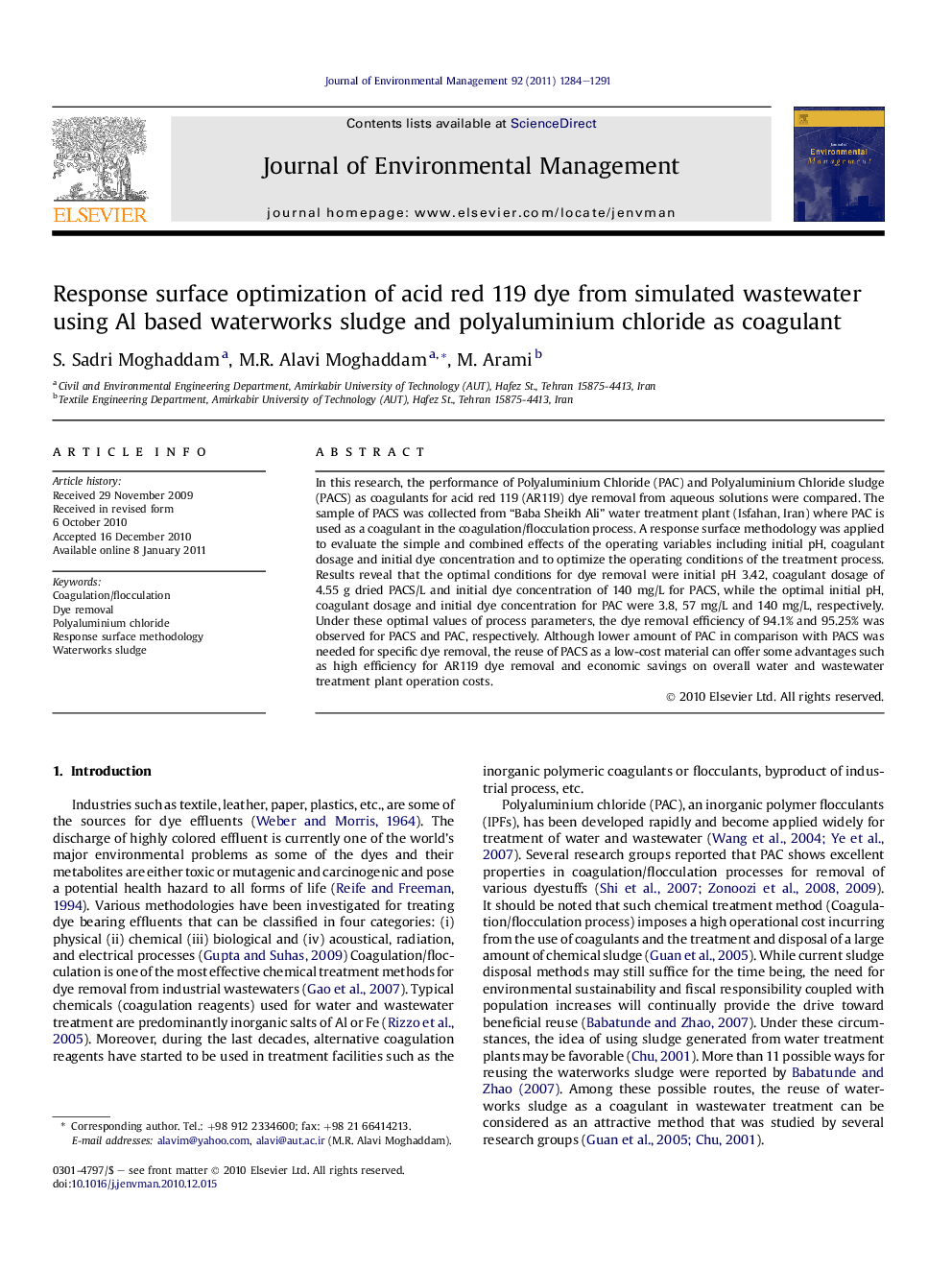| Article ID | Journal | Published Year | Pages | File Type |
|---|---|---|---|---|
| 10505597 | Journal of Environmental Management | 2011 | 8 Pages |
Abstract
In this research, the performance of Polyaluminium Chloride (PAC) and Polyaluminium Chloride sludge (PACS) as coagulants for acid red 119 (AR119) dye removal from aqueous solutions were compared. The sample of PACS was collected from “Baba Sheikh Ali” water treatment plant (Isfahan, Iran) where PAC is used as a coagulant in the coagulation/flocculation process. A response surface methodology was applied to evaluate the simple and combined effects of the operating variables including initial pH, coagulant dosage and initial dye concentration and to optimize the operating conditions of the treatment process. Results reveal that the optimal conditions for dye removal were initial pH 3.42, coagulant dosage of 4.55Â g dried PACS/L and initial dye concentration of 140Â mg/L for PACS, while the optimal initial pH, coagulant dosage and initial dye concentration for PAC were 3.8, 57Â mg/L and 140Â mg/L, respectively. Under these optimal values of process parameters, the dye removal efficiency of 94.1% and 95.25% was observed for PACS and PAC, respectively. Although lower amount of PAC in comparison with PACS was needed for specific dye removal, the reuse of PACS as a low-cost material can offer some advantages such as high efficiency for AR119 dye removal and economic savings on overall water and wastewater treatment plant operation costs.
Keywords
Related Topics
Physical Sciences and Engineering
Energy
Renewable Energy, Sustainability and the Environment
Authors
S. Sadri Moghaddam, M.R. Alavi Moghaddam, M. Arami,
